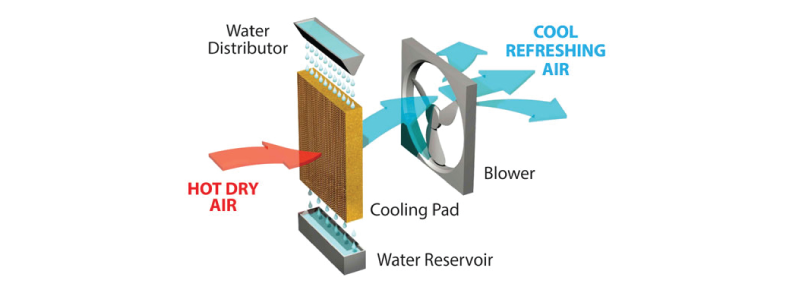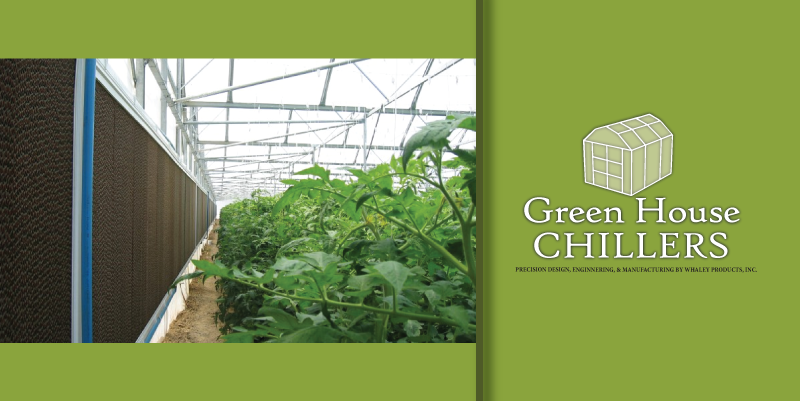Evaporative Cooling
Evaporative cooling, like how the body uses sweat to cool down. The reduction of heat in a greenhouse is due to the evaporation of liquid from plants. Humid air containing the heat is picked up inside of a green house. The air is then exhausted through vans where it is cooled and drier air is brought in. This process is most effective in dryer climates where extended heat inside a greenhouse can delay flowering. The process is also effective when humidity in the outside air is low. Two forms of evaporative cooling systems exist for greenhouses. The forms are pad and fan systems, and fog systems. These will be discussed below in greater detail.
Two types of evaporative cooling exist. One is called direct evaporating. The process lowers the temperature and increase humidity by changing liquid water to water vapor. The air in this process changes from a warm dry air, to a cool moist air. A wetted pad is sprayed with water at the top so it can become saturated. The excess water from the soaked pad is collected in a reservoir, and recirculated to the top to start the process over. This application can be passive, without the use of a fan.
 The other type of evaporative cooling is called indirect evaporating. Indirect cooling uses a type of heat exchanger to transfer cool energy to the supply air. The heat exchanger supplies cold air to the process, but never comes in contact with the air that is procured in the direct process. Cold air is supplied through the soaked pad while warm air is blown across in conjunction to it. The cool airstream is then released outside or to another device. No moisture is added to the the incoming air, but humidity does rise. This is labeled exhaust in the diagram below. This evaporative process is best used for hot humid areas.
The other type of evaporative cooling is called indirect evaporating. Indirect cooling uses a type of heat exchanger to transfer cool energy to the supply air. The heat exchanger supplies cold air to the process, but never comes in contact with the air that is procured in the direct process. Cold air is supplied through the soaked pad while warm air is blown across in conjunction to it. The cool airstream is then released outside or to another device. No moisture is added to the the incoming air, but humidity does rise. This is labeled exhaust in the diagram below. This evaporative process is best used for hot humid areas.
